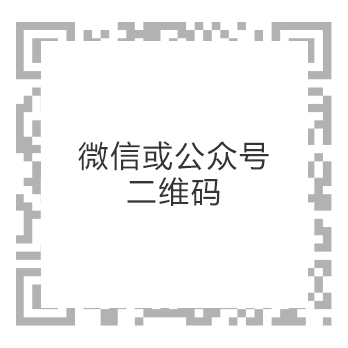New Reflective Material Color Lattice Knowledge
Color lattice is a new type of printable reflective material, characterized by:
1、 Super strong reflective intensity: Based on micro prism regression reflection technology, the reflective intensity reaches 300cd/lx/m2.
2、 Can be directly printed: Its surface layer is made of PVC polymer material, which has strong ink absorption and can be directly printed.
3、 Easy to use: Its substrate types include fiber synthetic cloth and PVC calendered film. The fiber synthetic cloth base has super strong tensile strength, which can be used like ordinary fiber synthetic spray painting cloth, directly spray painting, and directly tighten installation; PVC rolling film can be directly applied to any smooth fabric after being coated with self-adhesive.
Lattice type
Color lattice is divided into fabric based reflective materials and adhesive based reflective materials according to different materials.
Fabric based reflective material: composed of a reflective layer and a base layer of lightbox cloth. The fabric based reflective material can be made into large outdoor billboards after spray painting, and is used in outdoor environments such as highways, roads, and mines. It does not require lighting at night, only requires vehicle light and can make the advertising content clear and bright, with the same effect as during the day.
Adhesive based reflective material pressure-sensitive adhesive reflective film: composed of reflective layer, bottom film, pressure-sensitive adhesive and release layer, with more than ten main colors including white, red, blue, yellow, green, orange, fluorescent yellow, brown, etc. Adhesive based reflective materials also have excellent reflective performance. And it can be processed by methods such as spray painting, screen printing, and engraving to produce various traffic signs, small billboards, and advertising fonts, which can be applied in various places.
According to their differences in reflective structures, they can be further divided into standard reflective materials, wide-angle reflective materials, and star shaped reflective materials.
The iconic reflective material has excellent and balanced quality indicators, and due to its outstanding reflective index, it is the product with the highest market demand.
The colored lattice reflective material has a reflectivity of 400CPL to 1200CPL. The reflection of weak external light can achieve the effect of lighting, making the reflective material bright and eye-catching in dark environments.
The unique properties of colored lattices
1、 Compared to ordinary lightbox printing cloth, advertising works 24 hours a day.
It has unique reflective performance and does not require an internal or external light source at night. By reflecting the light emitted by passing vehicles themselves, it can achieve the same visible effect as the internal or external light sources. The use of ordinary inkjet printing cloth advertising only has visible advertising effects during the day, and the visibility at night is extremely low, which cannot serve the purpose of advertising at all. Reflective printing cloth is the same as regular printing cloth during the day, but at night it can achieve high intensity and long-distance visibility by reflecting the light emitted by passing vehicles, thus making advertisements have the same advertising effect during the day and night.
2、 Compared with auxiliary light source advertisements such as light boxes and external light sources, it is environmentally friendly, easy to maintain, and has lower usage costs.
Due to the fact that the visibility of reflective printing materials relies on the reflection of light emitted by passing vehicles back to the location where the light source is emitted, vehicles and pedestrians in the same direction as the light source can clearly see the advertisement. It does not require any other auxiliary light sources, so it achieves visible effects without consuming energy, making it more environmentally friendly than lighting advertisements. There is no need for auxiliary lighting facilities, so there is no maintenance expenditure on electrical and other aspects, which is easier to maintain than advertising with auxiliary light sources. Auxiliary light sources require light source facilities, power consumption, and maintenance costs, which are much higher than the cost of using reflective printing cloth advertisements. Considering energy consumption and usage costs, advertisements for auxiliary light sources usually only run until 11 pm, and there is no advertising effect after 11 pm. The use of reflective printing materials can completely eliminate these factors, as long as there is a car, advertisements using reflective printing can be clearly seen.
3、 Compared with ordinary reflective materials, it has printability, tensile strength, and stronger reflective strength.
The traditional reflective advertising material is generally PET adhesive advertising grade reflective film. The characteristics of PET material determine that it cannot be sprayed. Generally, PET advertising grade reflective film is only used for engraving, which greatly limits the use of reflective materials in advertising. The emergence of reflective printing materials has solved this problem. The surface layer of reflective printing materials is a high gloss material that can be sprayed, with strong ink absorption. Ordinary solvent inks can be used for printing. Generally, advertising grade reflective film does not have the required tensile performance for advertising, and can only be used by sticking to other media. The bottom layer of reflective inkjet printing fabric is fiber synthetic fabric, which has tensile strength and can be used like ordinary advertising inkjet printing fabric. The typical value of the retro reflection coefficient of the main product of general advertising grade reflective film - white reflective film is 50cd/lx/m2, while the typical retro reflection coefficient of reflective printing cloth is above 200 cd/lx/m2.
4、 Reflective spray painting materials add safety performance to roads.
Advertisements made with reflective spray painting materials have a nighttime visibility function similar to reflective traffic signs. The use of reflective spray painting materials as roadside advertisements on road sections allows passing vehicles to clearly see the outline of the road. If there are pedestrians blocking the reflected light, they will also display the silhouette of people's shadows, making it easier for drivers to distinguish pedestrians. Reflective spray painting materials endow roads with higher safety performance.


